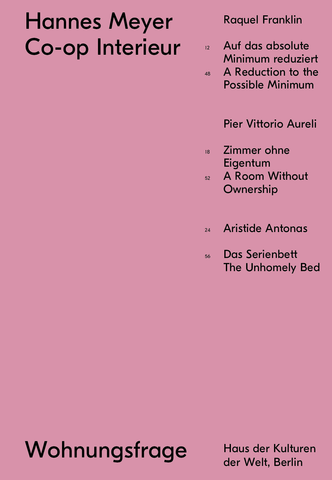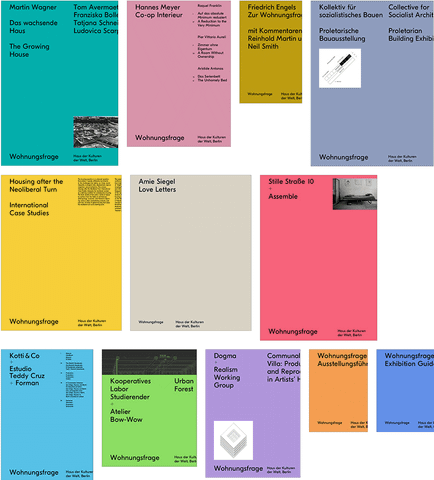Hannes Meyer: Co-op Interieur

Texts: Aristide Antonas, Pier Vittorio Aureli, Raquel Franklin
German / English
ISBN 978-3-95905-045-6
EUR 16.00
Available at bookstores, the shop at the Haus der Kulturen der Welt and online at Spector Books.
In his photographs of the corner of a room that is characterised at least as much by the absence of people, objects, and spatial features as by the distinctiveness of its design, Hannes Meyer gave expression to a radical, anti-bourgeois style of interior. Architecture and design were not meant to fulfil historically determined needs but to overcome these very constraints. Meyer’s Co-op Interieur was not a recommendation for a mode of interior design but rather a manifesto proclaiming an alternative principle of housing and “living” and, by extension, a new world.
*
In 1926 the Berlin architecture critic Adolf Behne received a photograph from Basel: depicted on it were four objects, prosaically arranged in a makeshift corner of a room. Entitled Co-op. Interieur, the photo had been sent by the architect Hannes Meyer who had composed the scene. Bearing the caption “Die Wohnung,” (The Apartment) the photo was published in the journal Das Werk, as the last of a series of images accompanying Meyer’s article “Die Neue Welt” (The New World). Behne used it almost simultaneously in an essay for the popular Berlin monthly magazine Uhu, commenting: “Extreme. A modern room, which will not be to everyone’s taste.”
As the two parallel publications of that year intimate, Meyer sought to position this motif of a sparsely furnished interior as the illustration of an idea. With the photo of a room, distinguished as much by the absence of people, objects, and spatial characteristics, as it is by the uniqueness of its design, he was articulating a radical, anti-bourgeois lifestyle: rather than serving to gratify needs shaped historically, architecture and design were now the means to overcome precisely these constraints.
What Behne interpreted as a matter of taste, constituted a general standard for Meyer. For Co-op. Interieur was not the draft of an interior design, but a manifesto for a different principle of living and thus for a new world. Featuring a critique of the image by Raquel Franklin, together with essays by Aristide Antonas and Pier Vittorio Aureli, this volume discusses how, by invaginating this new world into the corner of a room, the principles of collectivity and utility are represented as counterpoints to private property.

